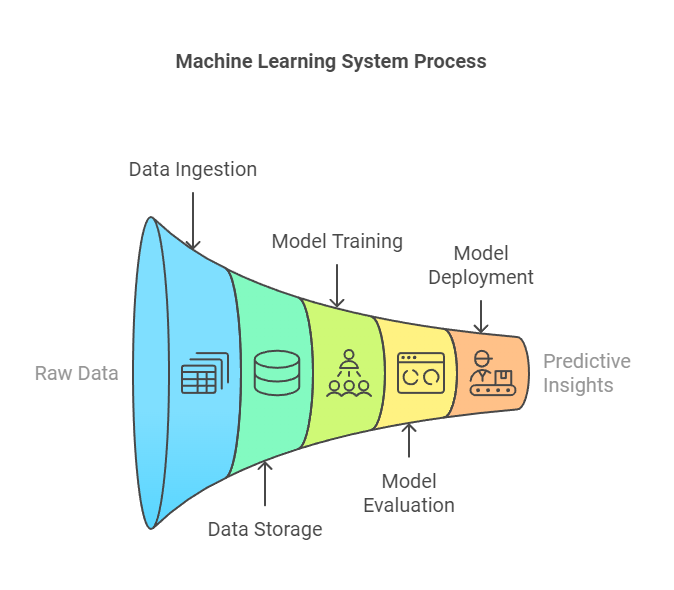Machine Learning (ML) System Architecture

A Machine Learning (ML) system architecture refers to the structure and organization of the various components and processes that make up a machine learning system. It defines how data is handled, models are trained and evaluated, and predictions are generated.
Key Components of an ML System Architecture
- Data Ingestion: This involves collecting data from various sources, such as databases, APIs, and streaming platforms. The data is then prepared for use in machine learning models through cleaning, transforming, and organizing.
- Data Storage: The processed data is stored in a database or data lake, often in a format optimized for querying and analysis.
- Model Training: This stage involves using the prepared data to train machine learning models. Various algorithms and techniques are employed to identify patterns and relationships in the data.
- Model Evaluation: The trained models are evaluated to assess their performance and accuracy. Metrics such as precision, recall, and F1-score are used to measure the effectiveness of the models.
- Model Deployment: Once a model is deemed satisfactory, it is deployed into a production environment where it can be used to make predictions on new data.
- Monitoring and Maintenance: After deployment, the model's performance is continuously monitored to ensure it remains accurate and effective. The model may need to be retrained or updated periodically to maintain its performance.
Types of ML System Architectures
The specific architecture of an ML system can vary depending on the use case and requirements. Some common types include:
- Batch Processing: This architecture processes data in batches, typically on a scheduled basis. It is suitable for applications where real-time predictions are not required.
- Real-time Processing: This architecture processes data in real-time, allowing for immediate predictions. It is suitable for applications such as fraud detection and online recommendations.
- Hybrid Architecture: This architecture combines batch and real-time processing to leverage the benefits of both approaches.
Benefits of a Well-Designed ML System Architecture
- Scalability: A well-designed architecture can handle large volumes of data and traffic.
- Reliability: The system is designed to be fault-tolerant and ensure high availability.
- Efficiency: The architecture optimizes resource utilization and minimizes processing time.
- Maintainability: The system is designed to be easily updated and maintained.
In conclusion, a well-defined ML system architecture is crucial for building scalable, reliable, and efficient machine learning systems. It provides a blueprint for developing and deploying ML models, ensuring that they meet the specific needs of the application.
